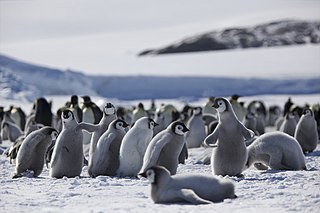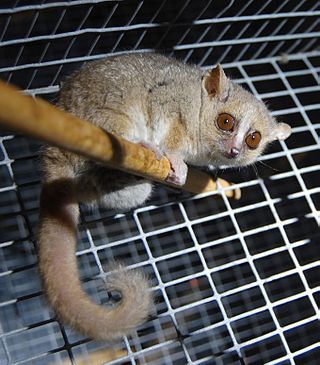Related Research Articles

Aglais io, the European peacock, or the peacock butterfly, is a colourful butterfly, found in Europe and temperate Asia as far east as Japan. It was formerly classified as the only member of the genus Inachis. It should not be confused or classified with the "American peacocks" in the genus Anartia; while belonging to the same family as the European peacock, Nymphalidae, the American peacocks are not close relatives of the Eurasian species. The peacock butterfly is resident in much of its range, often wintering in buildings or trees. It therefore often appears quite early in spring. The peacock butterfly has figured in research in which the role of eyespots as an anti-predator mechanism has been investigated. The peacock is expanding its range and is not known to be threatened.

Behavioral ecology, also spelled behavioural ecology, is the study of the evolutionary basis for animal behavior due to ecological pressures. Behavioral ecology emerged from ethology after Niko Tinbergen outlined four questions to address when studying animal behaviors: What are the proximate causes, ontogeny, survival value, and phylogeny of a behavior?

Ursus is a genus in the family Ursidae (bears) that includes the widely distributed brown bear, the polar bear, the American black bear, and the Asian black bear. The name is derived from the Latin ursus, meaning bear.

Foraging is searching for wild food resources. It affects an animal's fitness because it plays an important role in an animal's ability to survive and reproduce. Foraging theory is a branch of behavioral ecology that studies the foraging behavior of animals in response to the environment where the animal lives.

The Panamanian white-faced capuchin, also known as the Panamanian white-headed capuchin or Central American white-faced capuchin, is a medium-sized New World monkey of the family Cebidae, subfamily Cebinae. Native to the forests of Central America, the white-faced capuchin is important to rainforest ecology for its role in dispersing seeds and pollen.

The gray mouse lemur, grey mouse lemur or lesser mouse lemur is a small lemur, a type of strepsirrhine primate, found only on the island of Madagascar. Weighing 58 to 67 grams, it is the largest of the mouse lemurs, a group that includes the smallest primates in the world. The species is named for its mouse-like size and coloration and is known locally as tsidy, koitsiky, titilivaha, pondiky, and vakiandry. The gray mouse lemur and all other mouse lemurs are considered cryptic species, as they are nearly indistinguishable from each other by appearance. For this reason, the gray mouse lemur was considered the only mouse lemur species for decades until more recent studies began to distinguish between the species.

The speckled wood is a butterfly found in and on the borders of woodland areas throughout much of the Palearctic realm. The species is subdivided into multiple subspecies, including Pararge aegeria aegeria, Pararge aegeria tircis, Pararge aegeria oblita, and Pararge aegeria insula. The color of this butterfly varies between subspecies. The existence of these subspecies is due to variation in morphology down a gradient corresponding to a geographic cline. The background of the wings ranges from brown to orange, and the spots are either pale yellow, white, cream, or a tawny orange. The speckled wood feeds on a variety of grass species. The males of this species exhibit two types of mate locating behaviors: territorial defense and patrolling. The proportion of males exhibiting these two strategies changes based on ecological conditions. The monandrous female must choose which type of male can help her reproduce successfully. Her decision is heavily influenced by environmental conditions.

Sperm competition is the competitive process between spermatozoa of two or more different males to fertilize the same egg during sexual reproduction. Competition can occur when females have multiple potential mating partners. Greater choice and variety of mates increases a female's chance to produce more viable offspring. However, multiple mates for a female means each individual male has decreased chances of producing offspring. Sperm competition is an evolutionary pressure on males, and has led to the development of adaptations to increase male's chance of reproductive success. Sperm competition results in a sexual conflict between males and females. Males have evolved several defensive tactics including: mate-guarding, mating plugs, and releasing toxic seminal substances to reduce female re-mating tendencies to cope with sperm competition. Offensive tactics of sperm competition involve direct interference by one male on the reproductive success of another male, for instance by mate guarding or by physically removing another male's sperm prior to mating with a female. For an example, see Gryllus bimaculatus.

The small heath is a butterfly species belonging to the family Nymphalidae, classified within the subfamily Satyrinae. It is the smallest butterfly in this subfamily. The small heath is diurnal and flies with a noticeable fluttering flight pattern near the ground. It rests with closed wings when not in flight. It is widespread in colonies throughout the grasslands of Eurasia and north-western Africa, preferring drier habitats than other Coenonympha, such as salt marshes, alpine meadows, wetlands, and grasslands near water. However, habitat loss caused by human activities has led to a decline in populations in some locations.

Polygonia c-album, the comma, is a food generalist (polyphagous) butterfly species belonging to the family Nymphalidae. The angular notches on the edges of the forewings are characteristic of the genus Polygonia, which is why species in the genus are commonly referred to as anglewing butterflies. Comma butterflies can be identified by their prominent orange and dark brown/black dorsal wings.

Leptidea sinapis, or the wood white butterfly of the family Pieridae, is a small white butterfly that is mainly found in England, Ireland, and Northern Europe. The butterfly has white wings with grey or yellow markings near the center or tip of the wing. It flies slowly and low over its shrubbery habitat. Males initiate courtship with females and can mate multiply, while females tend to only mate once in their lifetime.

The grayling or rock grayling is a species in the brush-footed butterfly family Nymphalidae. Although found all over Europe, the grayling mostly inhabits coastal areas, with inland populations declining significantly in recent years. The grayling lives in dry and warm habitats with easy access to the sun, which helps them with body temperature regulation.

Intraspecific competition is an interaction in population ecology, whereby members of the same species compete for limited resources. This leads to a reduction in fitness for both individuals, but the more fit individual survives and is able to reproduce. By contrast, interspecific competition occurs when members of different species compete for a shared resource. Members of the same species have rather similar requirements for resources, whereas different species have a smaller contested resource overlap, resulting in intraspecific competition generally being a stronger force than interspecific competition.

Phengaris alcon, the Alcon blue or Alcon large blue, is a butterfly of the family Lycaenidae and is found in Europe and across the Palearctic to Siberia and Mongolia.

Cannibalism is the act of consuming another individual of the same species as food. Cannibalism is a common ecological interaction in the animal kingdom and has been recorded in more than 1,500 species. Human cannibalism is also well documented, both in ancient and in recent times.

Madame Berthe's mouse lemur or Berthe's mouse lemur is the smallest of the mouse lemurs and the smallest primate in the world; the average body length is 9.2 cm (3.6 in) and seasonal weight is around 30 g (1.1 oz). Microcebus berthae is one of many species of Malagasy lemurs that came about through extensive speciation, caused by unknown environmental mechanisms and conditions.

Jalmenus evagoras, the imperial hairstreak, imperial blue, or common imperial blue, is a small, metallic blue butterfly of the family Lycaenidae. It is commonly found in eastern coastal regions of Australia. This species is notable for its unique mutualism with ants of the genus Iridomyrmex. The ants provide protection for juveniles and cues for adult mating behavior. They are compensated with food secreted from J. evagoras larvae. The ants greatly enhance the survival and reproductive success of the butterflies. J. evagoras lives and feeds on Acacia plants, so butterfly populations are localized to areas with preferred species of both host plants and ants.
In ethology, male-male intrasexual competition occurs when two males of the same species compete for the opportunity to mate with a female. Sexually dimorphic traits, size, sex ratio, and the social situation may all play a role in the effects male-male competition has on the reproductive success of a male and the mate choice of a female. Larger males tend to win male-male conflicts due to their sheer strength and ability to ward off other males from taking over their females. For instance, in the fly Dryomyza anilis, size shows the strongest correlation to the outcome of male-male conflicts over resources like territory and females.

In ecology, scramble competition refers to a situation in which a resource is accessible to all competitors. However, since the particular resource is usually finite, scramble competition may lead to decreased survival rates for all competitors if the resource is used to its carrying capacity. Scramble competition is also defined as "[a] finite resource [that] is shared equally amongst the competitors so that the quantity of food per individual declines with increasing population density". A further description of scramble competition is "competition for a resource that is inadequate for the needs of all, but which is partitioned equally among contestants, so that no competitor obtains the amount it needs and all would die in extreme cases."
Filial cannibalism occurs when an adult individual of a species consumes all or part of the young of its own species or immediate offspring. Filial cannibalism occurs in many species ranging from mammals to insects, and is especially prevalent in various types of fish species with males that engage in egg guardianship. The exact evolutionary purpose of the practice in those species is unclear and debated among zoologists, though there is consensus that it may have, or may have had at some point in species' evolutionary history, certain evolutionary and ecological implications.
References
- ↑ Brännström Å, Sumpter DJ (October 2005). "The role of competition and clustering in population dynamics" (PDF). Proceedings of the Royal Society B: Biological Sciences. 272 (1576): 2065–72. doi:10.1098/rspb.2005.3185. PMC 1559893 . PMID 16191618.
- ↑ Vogel ER (August 2005). "Rank differences in energy intake rates in white-faced capuchin monkeys, Cebus capucinus: the effects of contest competition". Behavioral Ecology and Sociobiology. 58 (4): 333–344. Bibcode:2005BEcoS..58..333V. doi:10.1007/s00265-005-0960-4. ISSN 0340-5443. S2CID 29039152.
- ↑ Dammhahn M, Kappeler PM (February 2010). "Scramble or contest competition over food in solitarily foraging mouse lemurs (Microcebus spp.): New insights from stable isotopes". American Journal of Physical Anthropology. 141 (2): 181–9. doi:10.1002/ajpa.21129. PMID 19591211.
- ↑ Wai KM, Fujii K (June 1990). "Intraspecific larval competition among wasps parasitic of bean weevil larvae". Researches on Population Ecology. 32 (1): 85–98. Bibcode:1990PopEc..32...85W. doi:10.1007/BF02512591. ISSN 0034-5466. S2CID 41202920.
- ↑ Tuda M, Iwasa Y (October 1998). "Evolution of contest competition and its effect on host–parasitoid dynamics". Evolutionary Ecology. 12 (7): 855–870. Bibcode:1998EvEco..12..855T. doi:10.1023/A:1006550817371. ISSN 0269-7653. S2CID 20737569.
- 1 2 Grueter CC, Robbins AM, Abavandimwe D, Vecellio V, Ndagijimana F, Ortmann S, et al. (2016). "Causes, mechanisms, and consequences of contest competition among female mountain gorillas in Rwanda". Behavioral Ecology. 27 (3): 766–776. doi: 10.1093/beheco/arv212 . ISSN 1045-2249.
- ↑ Kemp DJ, Alcock J (September 2003). "Lifetime resource utilization, flight physiology, and the evolution of contest competition in territorial insects". The American Naturalist. 162 (3): 290–301. doi:10.1086/376890. PMID 12970838. S2CID 25146159.
- ↑ Kemp DJ, Wiklund C (2001-05-07). "Fighting without weaponry: a review of male-male contest competition in butterflies". Behavioral Ecology and Sociobiology. 49 (6): 429–442. Bibcode:2001BEcoS..49..429K. doi:10.1007/s002650100318. ISSN 0340-5443. S2CID 25209886.
- ↑ Bergman M, Olofsson M, Wiklund C (October 2010). "Contest outcome in a territorial butterfly: the role of motivation". Proceedings. Biological Sciences. 277 (1696): 3027–33. doi:10.1098/rspb.2010.0646. PMC 2982028 . PMID 20462910.